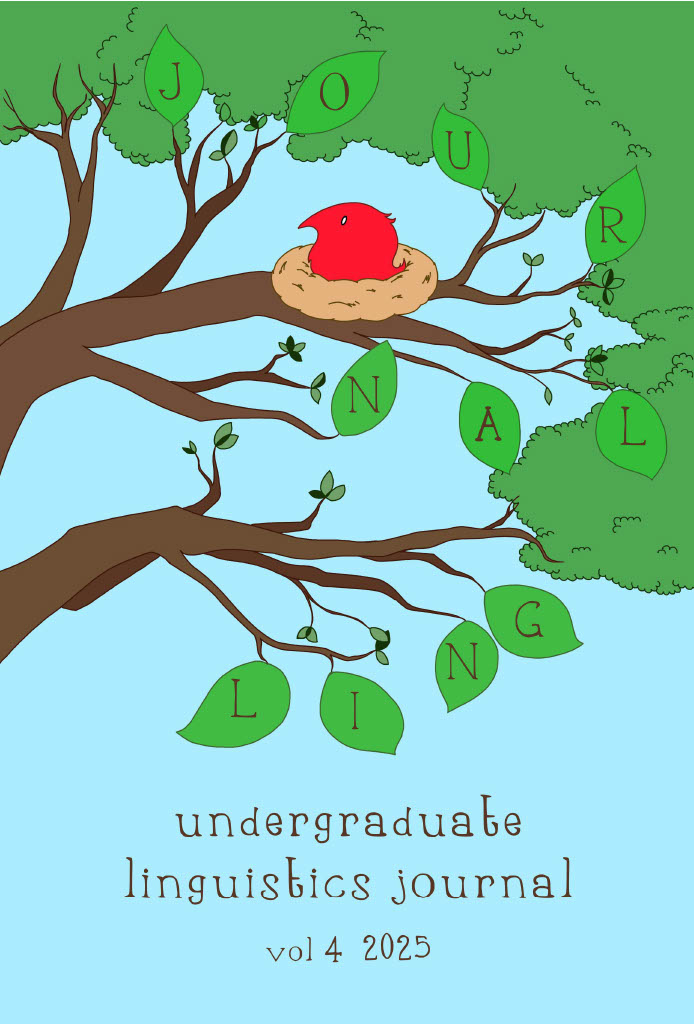Publié-e 2025-04-11
(c) Tous droits réservés Esmé Courie 2025

Cette œuvre est sous licence Creative Commons Attribution - Pas de Modification 4.0 International.
Résumé
This paper is an exploration of the antipassive in Inuktitut, a language spoken by the indigenous population of the eastern Canadian arctic including Northern Quebec/Nunavik, Nunatsiavut/Northern Labrador, and Nunavut. Data are from existing Inuktitut dictionaries and prior papers on the antipassive. First, I will provide an overview of Inuktitut and its usual alignment pattern. Then, I will introduce the antipassive. Next, I will outline the number of puzzles regarding the antipassive and Inuktitut. I will address some potential answers to these puzzles and a few problems with those answers. Afterwards, I will describe the antipassive in Inuktitut in more depth, as well as the overall linguistic understanding of the antipassive. This will allow me to arrive at the focus of this paper and clarify some definitions before moving forward. This paper will explore the interpretations of the Inuktitut antipassive by both Spreng (2006) and Compton (2017). I will then explore these arguments amongst other interpretations and discussions of the antipassive and split ergativity. Lastly, I will discuss my findings, outstanding questions and future research that could be done.

